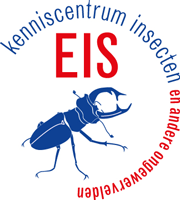| Reële kans op vestiging? |
Ja |
|
| Betrouwbaarheid beoordeling |
Grote mate van zekerheid (meerdere bronnen) |
|
| Vestigingsstatus |
Gevestigd |
|
| Zeldzaamheid |
Lokaal |
|
| Invasiviteit |
Potentieel invasief |
|
| Invasiviteit (toelichting) |
The origin of B. amphitrite is not exactly known. Usually the Indian Ocean and/or southwestern Pacific Ocean are mentioned. It has now spread to most of the warm and temperate seas of the world, including the larger part of the Atlantic Basin, the Eastern Pacific, and the North American Coast (Panama to San Francisco Bay, California). In Europe it was collected in Atlantic France as early as 1914 (Goulletquer et al. 2002). In the Mediterranean the origin is cryptogenic. Apart from this large range, the invasiveness is shown by the species' adaptability to different habitats and ability to grow on a wide range of hard surfaces. It is hermaphroditic and individuals have both male and female reproductive organs. It occupies a rather broad salinity range (Mesohaline-Euhaline, tolerating low salinity levels in estuaries). It needs, however, higher levels in order to breed. It also has a rather broad temperature range, tolerating temperatures as low as 12°C, although it needs temperatures of at least 15°C to breed. This factor limits its spread to northerly regions in Europe. This barnacle was most probably introduced to Europe by shipping (Fofonoff et al. 2003). |
|
| Type introductie |
Niet opzettelijk |
|
| Jaar van eerste introductie |
1962 |
|
| Jaar van eerste melding |
1969 |
|
| Natuurlijke verspreiding |
Azië |
|
Zuidelijke Stille Oceaan |
|
| Verspreiding in Nederland |
Zeeland |
|
| Verspreiding in Nederland (toelichting) |
Established specimens of this species were recorded for the first time in the Netherlands in 1962 near Vlissingen (Borghouts-Biersteker 1969). Other recordings followed soon thereafter. In the 1970s the species was found to occur all over Lake Veere (Vaas 1975). Recently however, it became scarce in the province of Zeeland, with only a few localities left, in the wild as well as in a warm-water outflow of a powerplant near Borssele (Faasse 1996). It almost completely disappeared from Lake Veere and neighbouring localities (Wolff 2005). The species is not yet recorded from the Dutch Wadden Sea area. Although Wiegeman (2008) found cyprids present in the seawater in the harbour of the Friesian Wadden Island Norderney, these were not able to settle however, most probably because of the water temperatures being too low. |
|
| Habitats |
Mariene habitats |
|
Estuaria en brakwatergebieden |
|
| Wijze van introductie |
Aangroei op scheepsrompen |
|
| Impact |
Concurrentie |
|
| Ecologische impact (toelichting) |
B. amphitrite is a competitor for space and food. The animals are said to compete with commercially exploited bivalves (oysters) and also affect survival and growth of oysters by settling on their shells (Boudreaux et al. 2009). It is a common organism in fouling communities worldwide. In harbors of Japan (Yokohama; Tokyo), the species is reported to have largely replaced native barnacles (Zvyagintsev & Korn 2003). In Florida the species is said to have affected the composition of the fouling community by creating additional structure for the recruitment and colonization of other species (Bros 1987). In the Netherlands however, the ecological impact of this species is unknown, but probably negligible, because it is not common. |
|
| Economische impact (toelichting) |
Barnacles can have costly impacts for shipping lines and navies. Hull fouling increases fuel costs and decreases maneuverability of ships. For the clearing of foulings of ships and seawater pipies of coastal power stations often significant costs are made (Haderlie 1984). Apart from this, B. amphitrite in general is a frequent fouling organism of the Pacific Oyster Crassostrea gigas in warmer waters (Grizel & Heral 1991). In the Netherlands however, there are no data on any economic impact of this species, as it is not abundant and locally even decreased in numbers compared to the 1970's and early 1980's. |
|


